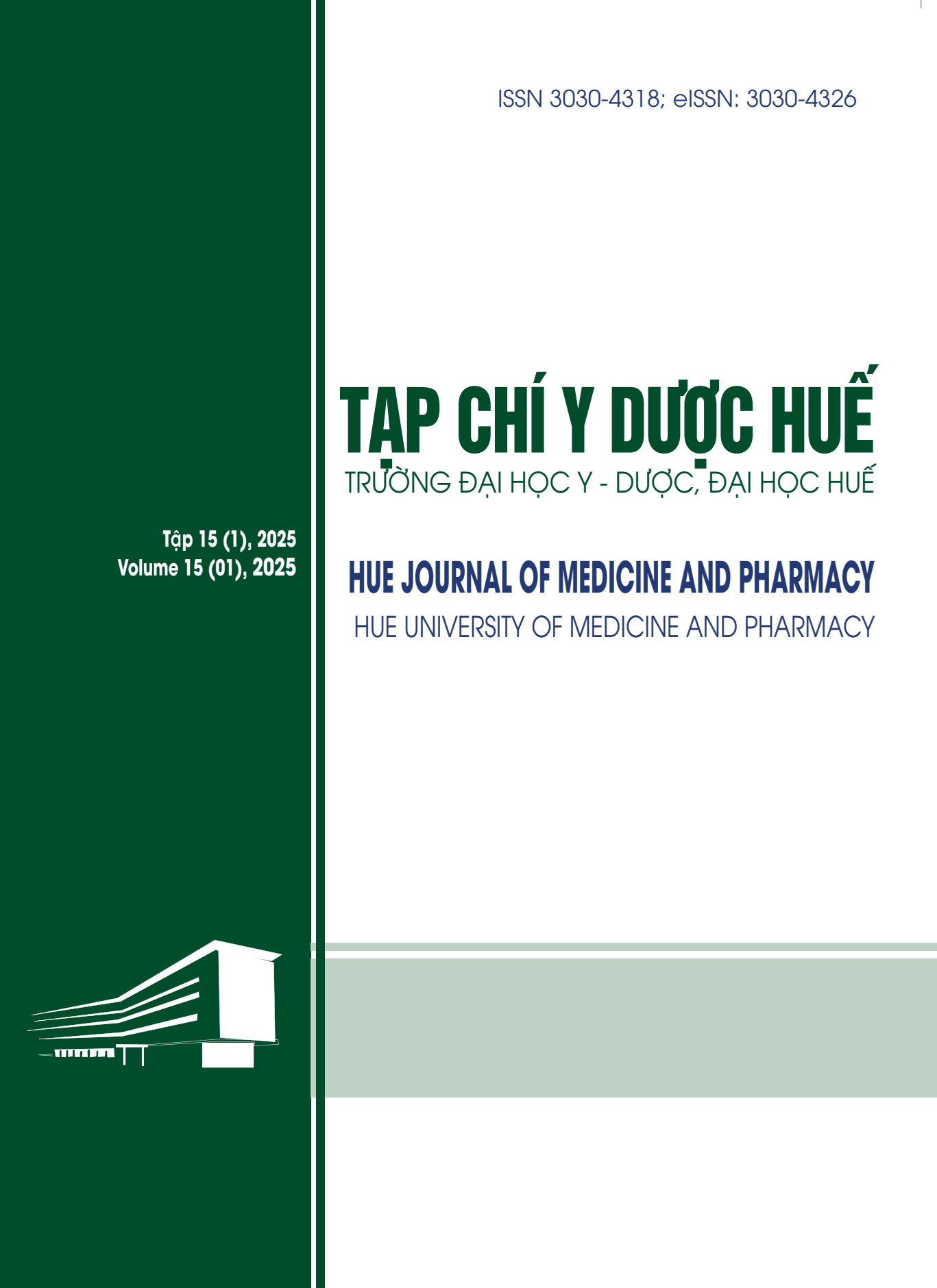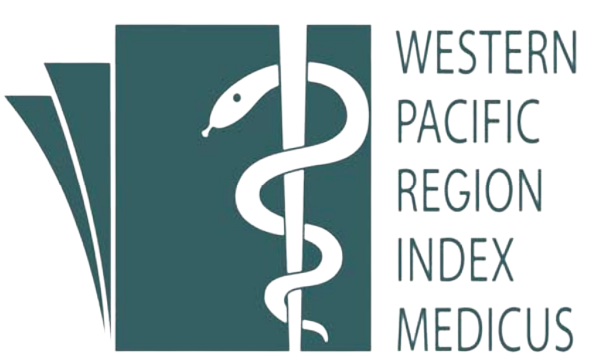Abstract
Objective: To apply and evaluate the accuracy of the Wang’s nomogram in predicting impacted ureteral stones among patients undergoing ureteroscopic lithotripsy in Vietnam.
Methods: A descriptive study was conducted on 103 patients with ureteral stones who underwent ureteroscopic lithotripsy from February 2023 to February 2024 at the Department of Urology, Hue University of Medicine and Pharmacy Hospital. Patients were recorded on factors related to the Wang’s nomogram including patient age, hydronephrosis, history of ureteral stone intervention, and ureteral wall thickness. At the same time, a number of factors related to impacted ureteral stones were surveyed, including age, gender, BMI, ASA index, etc. Each patient was scored through the Wang’s nomogram (including 4 factors: age, history of ipsilateral ureteral stone treatment, hydronephrosis, and ureteral wall thickness) to estimate the rate of impacted ureteral stones. Impacted ureteral stones were identified during surgery with the diagnostic criteria of failing to pass the guidewire through the stone on the first attempt. Calculate the accuracy, cut-off value, sensitivity, and specificity of the Wang’s nomogram.
Results: 103 patients were included in the study, of which impacted ureteral stones were 47 (45.6%); non-impacted ureteral stones were 56 (54.4%). Factors related to impacted ureteral stones: time of clinical symptoms (p=0.006); maximum cross-sectional area of the stone (p=0.033); stone volume (p=0.003); degree of hydronephrosis (p=0.001); ureteral wall thickness (p<0.0001); ureteral edema (p<0.0001); ureteral polyps (p<0.0001); ureteral adhesion stones (p<0.0001). The Wang’s nomogram has an accuracy of 0.883 (95%CI: 0.810 - 0.956; p<0.0001); the cutoff point of the nomogram is 84.25 points with a sensitivity of 94.4% and a specificity of 72.1%.
Conclusions: With a cut-off point of 84.25, the nomogram allowed prediction of impacted ureteral stones with a sensitivity of 94.4% and a specificity of 72.1%. The Wang’s nomogram is easy to perform and has high accuracy in predicting impacted ureteral stones in the population of patients with ureteral stones in Vietnam.
| Published | 2025-04-24 | |
| Fulltext |
|
|
| Language |
|
|
| Issue | Vol. 15 No. 1 (2025) | |
| Section | Original Articles | |
| DOI | 10.34071/jmp.2025.1.18 | |
| Keywords | sỏi niệu quản khảm, toán đồ Wang, độ dày thành niệu quản Impacted ureteral stone, Wang’s nomogram, ureteral wall thickness |

This work is licensed under a Creative Commons Attribution-NonCommercial-NoDerivatives 4.0 International License.
Copyright (c) 2025 Hue Journal of Medicine and Pharmacy
Seitz C, Tanovic E, Kikic Z, Fajkovic H. Impact of stone size, location, composition, impaction, and hydronephrosis on the efficacy of holmium:YAG-laser ureterolithotripsy. European urology, 2007; 52(6):1751-7.
Morgentaler A, Bridge SS, Dretler SP. Management of the impacted ureteral calculus. The Journal of urology, 1990; 143(2):263-6.
Khánh LĐ, Toàn TC, Việt PHQ. Ứng dụng toán đồ Imamura trong dự đoán sạch sỏi sau nội soi niệu quản ngược dòng tán sỏi niệu quản bằng laser. Tạp chí Y Dược học, Trường Đại học Y Dược Huế, 2020; Số đặc biệt, 01/2021.
Degirmenci T, Gunlusoy B, Kozacioglu Z, Arslan M, Kara C, Koras O, et al. Outcomes of ureteroscopy for the management of impacted ureteral calculi with different localizations. Urology, 2012; 80(4):811-5.
Fam XI, Singam P, Ho CC, Sridharan R, Hod R, Bahadzor B, et al. Ureteral stricture formation after ureteroscope treatment of impacted calculi: a prospective study. Korean journal of urology, 2015; 56(1):63-7.
Long Q, Guo J, Xu Z, Yang Y, Wang H, Zhu Y, et al. Experience of mini-percutaneous nephrolithotomy in the treatment of large impacted proximal ureteral stones. Urologia internationalis, 2013; 90(4):384-8.
Moufid K, Abbaka N, Touiti D, Adermouch L, Amine M, Lezrek M. Large impacted upper ureteral calculi: A comparative study between retrograde ureterolithotripsy and percutaneous antegrade ureterolithotripsy in the modified lateral position. Urology annals, 2013; 5(3):140-6.
Abat D, Börekoğlu A, Altunkol A, Köse I, Boğa MS. Is there any predictive value of the ratio of the upper to the lower diameter of the ureter for ureteral stone impaction? Current urology, 2021; 15(3):161-6.
Elibol O, Safak KY, Buz A, Eryildirim B, Erdem K, Sarica K. Radiological noninvasive assessment of ureteral stone impaction into the ureteric wall: A critical evaluation with objective radiological parameters. Investigative and clinical urology, 2017; 58(5):339-45.
Yoshida T, Inoue T, Omura N, Okada S, Hamamoto S, Kinoshita H, et al. Ureteral Wall Thickness as a Preoperative Indicator of Impacted Stones in Patients With Ureteral Stones Undergoing Ureteroscopic Lithotripsy. Urology, 2017; 106:45-9.
Legemate JD, Wijnstok NJ, Matsuda T, Strijbos W, Erdogru T, Roth B, et al. Characteristics and outcomes of ureteroscopic treatment in 2650 patients with impacted ureteral stones. World journal of urology, 2017; 35(10):1497-506.
Wang C, Jin L, Zhao X, Xue B, Zheng M. Development and validation of a preoperative nomogram for predicting patients with impacted ureteral stone: a retrospective analysis. BMC urology, 2021; 21(1):140.
Hamamoto S, Okada S, Inoue T, Sugino T, Unno R, Taguchi K, et al. Prospective evaluation and classification of endoscopic findings for ureteral calculi. Scientific Reports, 2020; 10(1):12292.
Zhang H, Guo C MW-G, Wang G, Wu P, Yu Y. Mini- Percutaneous Nephrolithotomy is the Optimal Treatment for Proximal Impacted Ureteral Stones Wrapped with the Ureteral Polyps Compared to Ureteroscopic Lithotripsy Clin Surg, 2022; 7:3458.
Sarica K, Kafkasli A, Yazici Ö, Çetinel AC, Demirkol MK, Tuncer M, et al. Ureteral wall thickness at the impacted ureteral stone site: a critical predictor for success rates after SWL. Urolithiasis, 2015; 43(1):83-8.
Yamashita S, Inoue T, Kohjimoto Y, Hara I. Comprehensive endoscopic management of impacted ureteral stones: Literature review and expert opinions. International journal of urology : official journal of the Japanese Urological Association, 2022; 29(8):799-806.






